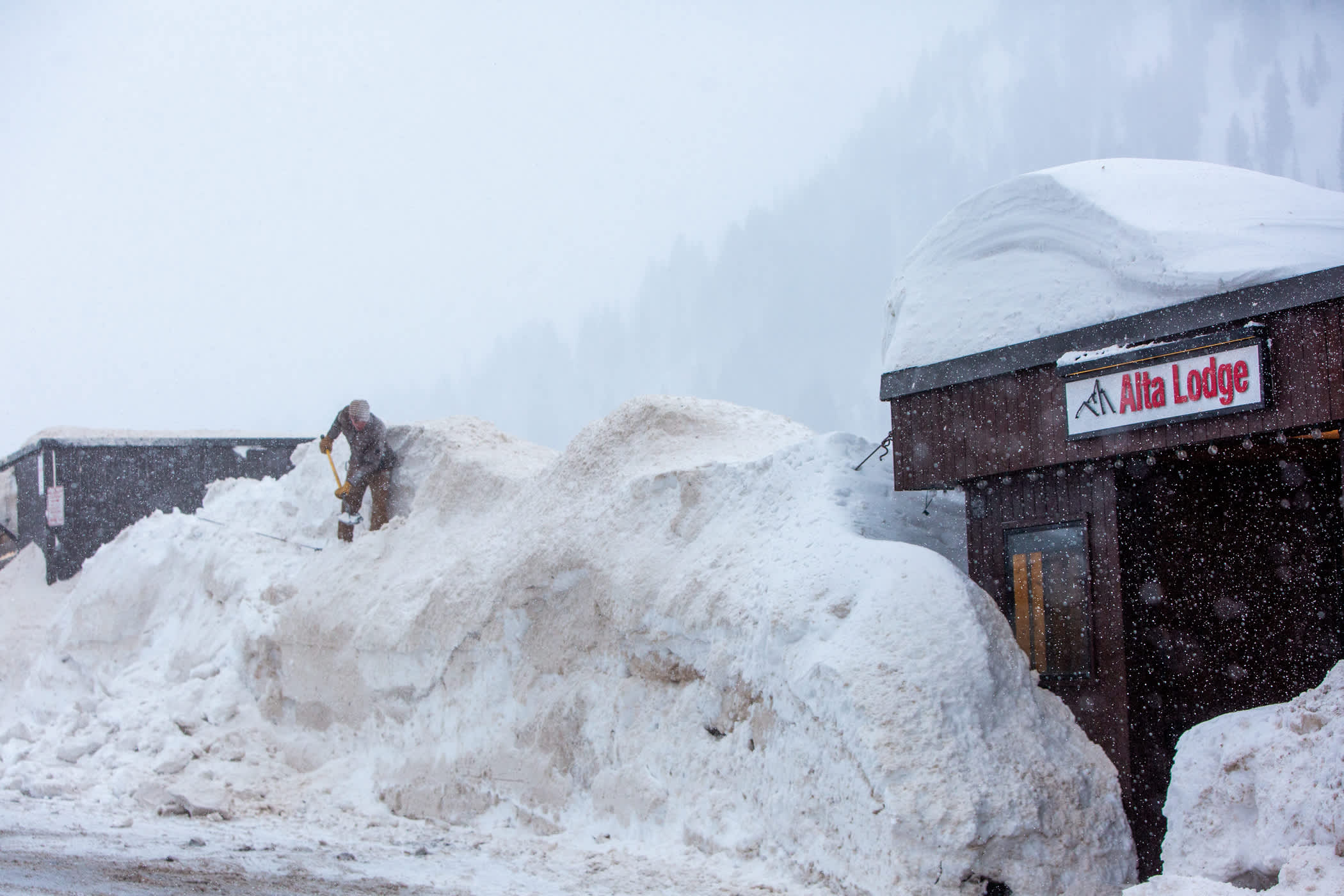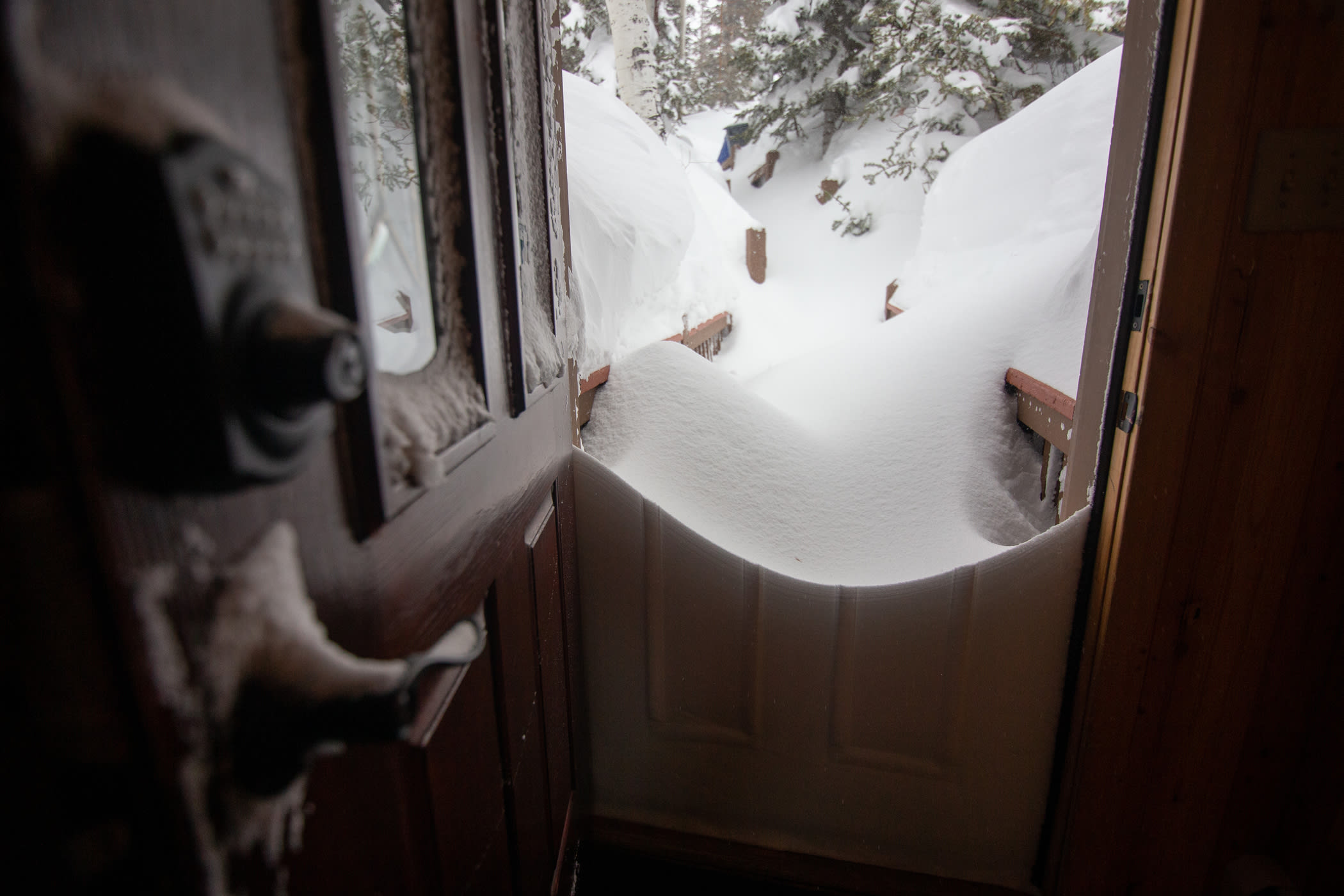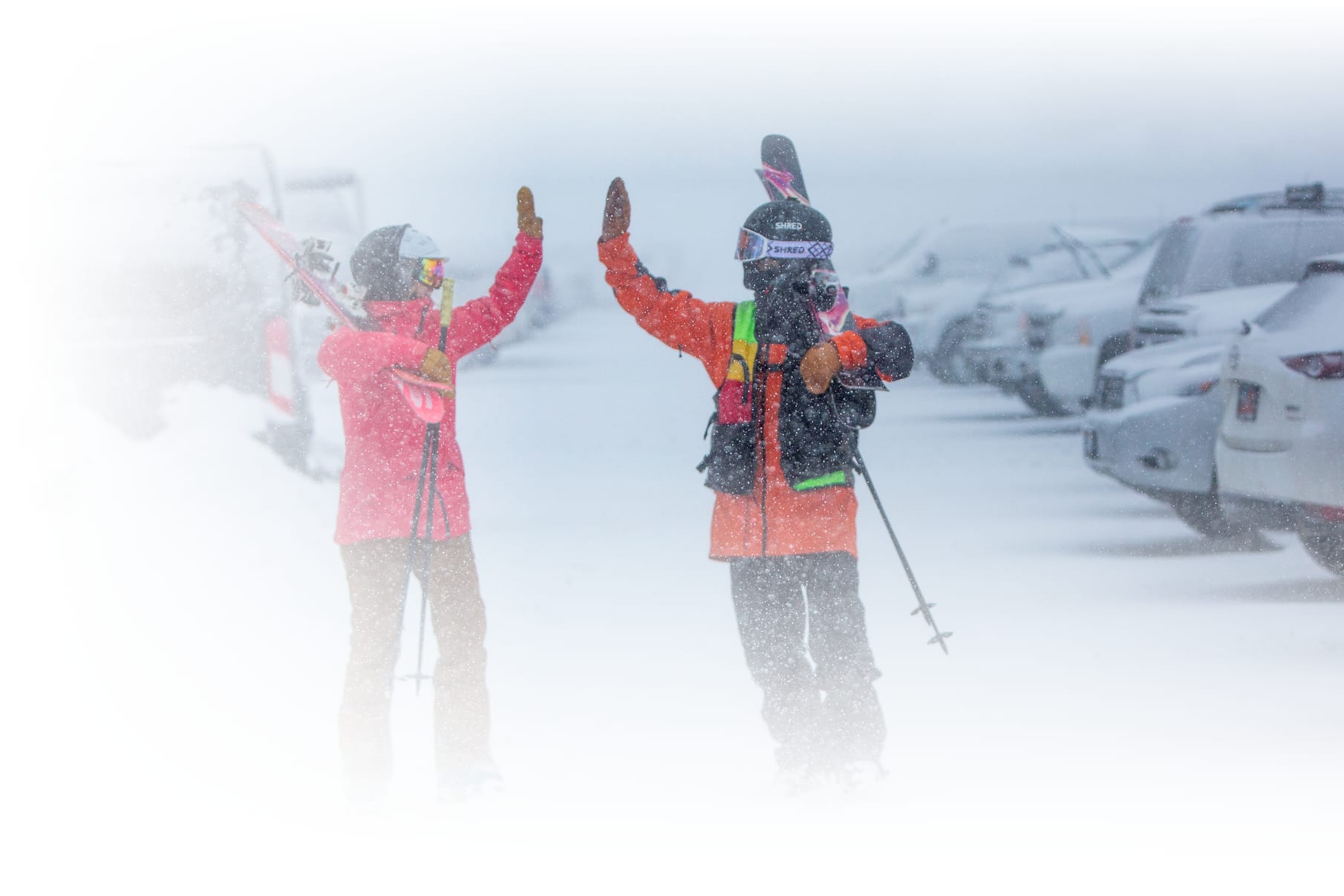A deep dive into uncharted snowbanks.
The spread of the COVID-19 global pandemic and resulting stay-at-home orders forced the shutdown of Alta Ski Area on Saturday, March 14th. Black Saturday, as some have called it, was a normal early-spring day at Alta—new snow, a little bit of sun and some great skiing. We rode the lifts with strangers, we high-fived at the bottom of runs and hugged friends before they headed down the canyon after another great day of skiing.
The last chair unloaded shortly after 4:30 pm and the lifts were turned off for the day, with the lifts department expecting to simply fire them up in the morning for a nice little Sunday powder day. The lifts never turned back on.
It was a tough decision to turn off the lifts, but it proved to be the correct one.
Long before social distancing, m95 masks, and flattening the curve were phrases in our everyday vocabulary, we were enjoying a great, yet very weird, ski season at Alta.
After a snowy October, the first three weeks of November were bone dry. It wasn’t until the last week of November that the snow arrived, and arrived in style between the 25th and 30th of November. Alta received 69.5" of snow just in time for Opening Weekend of the 2019-20 season.
 Jake Hopfinger skis powder on Saturday, November 28th | Photo: Rocko Menzyk
Jake Hopfinger skis powder on Saturday, November 28th | Photo: Rocko Menzyk
The snow kept coming in December. With the help of Alta Ski Patrol, the snowmakers and the cat crews, Alta was open wall-to-wall before the busy holiday season. There must have been plenty of Alta skiers on the nice list this year because we enjoyed our sixth consecutive White Christmas in the middle of an eight-day stretch of fresh snow. By the end of December, Alta had the Most Snowfall in North America.
Immediately following Alta’s annual New Year’s Eve Torchlight Parade, a series of cold winter storms took aim at Little Cottonwood Canyon. In a case of New Decade, Same Alta, we received 152.5 inches of snow in January, the second-snowiest January in the past decade.

An Alta Lodge employee digs out following an early January storm cycle. | Photo: Rocko Menzyk
The season was off to an incredible start. Between October and January 31st, the mid-Collins study plot had seen 347.5” of snow, the best start in terms of season-to-date snowfall in the past decade. At the time, it seemed like we were on our way to enjoying another remarkable season, already outpacing a memorable 2018-19 ski year.
That’s when things starting getting weird.
A winter storm made its way across Utah shortly after the final whistle of a sunny Super Bowl Sunday. Temperatures fell nearly 50 degrees, dropping 9.5” of 7% density snow at Alta and 18” in the Salt Lake Valley… yes, you read that correctly.
And that was just the start of a weird week.
A few days later, a moist tropical flow pounded Alta. For 72 consecutive hours, sustained winds of 30+ mph (an Alta record) dropped 33” of snow and 5.52 inches of water—with 3.54 inches falling in one 24-hour period.
The weight of the water and the unrelenting winds overwhelmed the lighter snow from earlier in the week, creating one of the worst avalanche problems in recent memory. Several large avalanches covered Highway 210 with tons of snow, debris and uprooted trees. Avalanche Control work on Toledo Bowl triggered a slide that crossed the highway crashing into the Alta Peruvian Lodge parking lot, burying rows of empty cars. Another avalanche from the Hellgate area crossed Highway 210 and struck a cabin, shattering the windows and filling the residence with debris.
As the Alta Ski Patrol and UDOT Avalanche crews worked around the clock to try and keep the mountain and roads open, Alta made the call to close the ski area. The lifts stopped spinning and the Town of Alta was placed under interlodge.

The snow started piling up on day one of interlodge. | Photo: Rocko Menzyk
Residents, employees and guests of Alta were required to stay inside until the avalanche danger abated. Aside from a 45-minute window to evacuate a few guests, the interlodge order stayed in effect for a record 52 consecutive hours. Alta Ski Area and Snowbird both closed for two days.
February saw another round of storms mid-month, bringing the February snow totals to 74” and the 421.5” season-to-date.
And then things got really strange.
Between February 17th and March 13th, Alta received 26” in 26 days, not exactly a drought, but a far cry from the snowfall rates we have grown accustomed to at Alta. As the frequency of new storms started to die down, concerns about the COVID-19 virus started to spread.
On March 14th, Colorado Governor, Jarid Polis, ordered all Colorado ski areas to shut down for seven days. Vail Resorts responded by immediately pulling the plug on their season at all 13 of their ski mountains. Shortly after, Alterra Resorts followed suit at all 15 of their resorts. As it became clear that, like Colorado, Utah ski towns were not immune to the coronavirus, Alta made the difficult decision to suspend all operations indefinitely for the 2019-20 winter.
It was an unprecedented move for our ski area, not since World War II had Alta suspended operations for a non-weather-related event in the middle of a ski season. The lifts would not spin again, ski lodges closed, spring events were canceled, and our planned closing day came and went while we all remained under stay-at-home orders in Salt Lake County.
As the reality of the global pandemic made its way to Alta, Utah, the season was suspended. Our hope now rests upon next winter.
March 14th marked the final day of the 2019-20 ski season. Just a few hours before what would end up being the last lift ride of the season for Alta skiers, one of our Photo of the Day photographers, Photo-John, snapped this shot a skier waving. Maybe it was hello. Maybe it was an oddly prescient goodbye wave to the 2019-20 ski season.

See ya later, 2020 | Photo: Photo-John
Alta Ski Area opened to uphill traffic, providing bathrooms and a groomed corridor for those willing to hike or skin up the mountain—as long as they continued to practice proper social distancing. Those die-hard skiers were rewarded with some great late-March and early-April storms. Nearly 100” of snow fell between Alta’s impromptu closing day and the originally planned closing day on April 26th.
Those that had to cancel plans for a spring ski trip in April can take some solace in below-average snowfall on Alta’s closed lifts. April saw just 38.5” of snow in April, well less half of the ten-year average of 80”.
The Final Stats:
- 2019-20 Seasonal Snowfall: 542 inches
- 99% of Alta's 40-Year Average Snowfall of 547 inches
- 111% of Alta's 10-Year Average Snowfall: of 491 inches
A strong start to the season, the strongest October-January in the past decade, helped carry the 2019-20 season to within a few inches of Alta's 40-year average. Even with a weak finish in April, the 542 inches of seasonal snowfall still eclipsed the 10-Year average by 10%.
Thank you, Mother Nature for a great start to the season and for doing your part to flatten the curve as the season came to an early end.
Let’s look at some powder skiing probabilities during the 107 total ski days during the 2019-20 ski season:
- 59 days of at least a trace of new snow = 55.1% of all ski days
- 54 days of at least an inch of new snow = 50.5% of all ski days
- 41 days of 3 inches or more of new snow = 38.3% of all ski days
- 23 days of six inches or more of new snow = 21.5% of all ski days
- 12 days of 10+ inches of new snow = 11.2% of all ski days*
- 2 days had 20+ inches of snow of new snow = 1.9% of all ski days
Statistically speaking, the 2019-20 season appears very average. In reality, it was anything but average, or normal, or even this whole new-normal thing. Let's hope the 2020-21 season is a return to normalcy—a return of riding chairlifts with strangers, hugs with friends, and high-fives at the bottom of powder runs.
Until then, be well and stay healthy.
View the 2018-19 Season Recap: A Deep Dive Into a Deep Winter



Add Your Comment